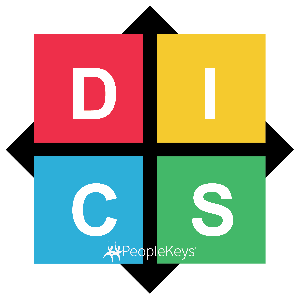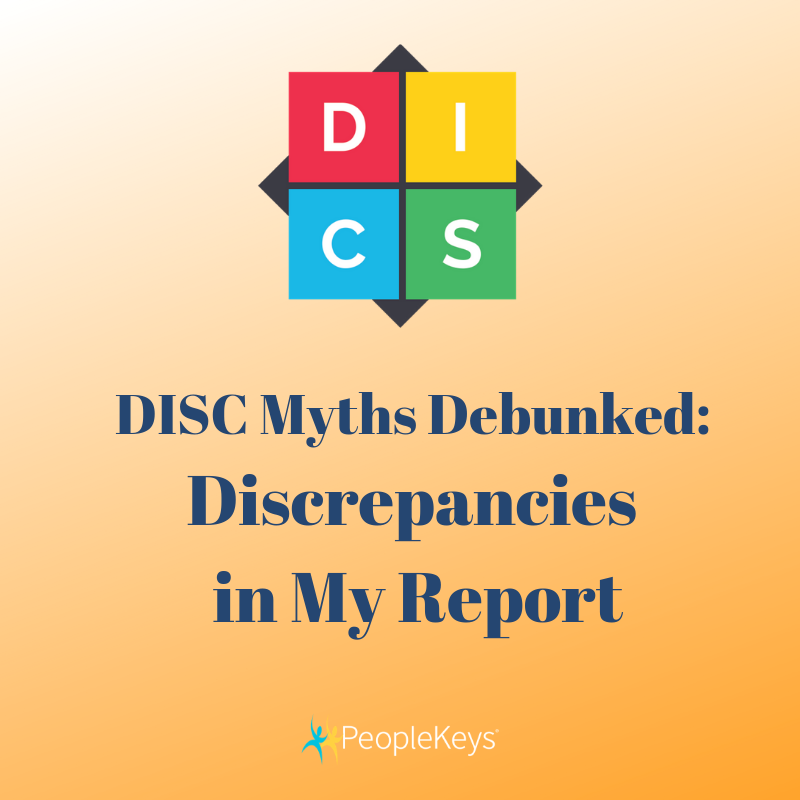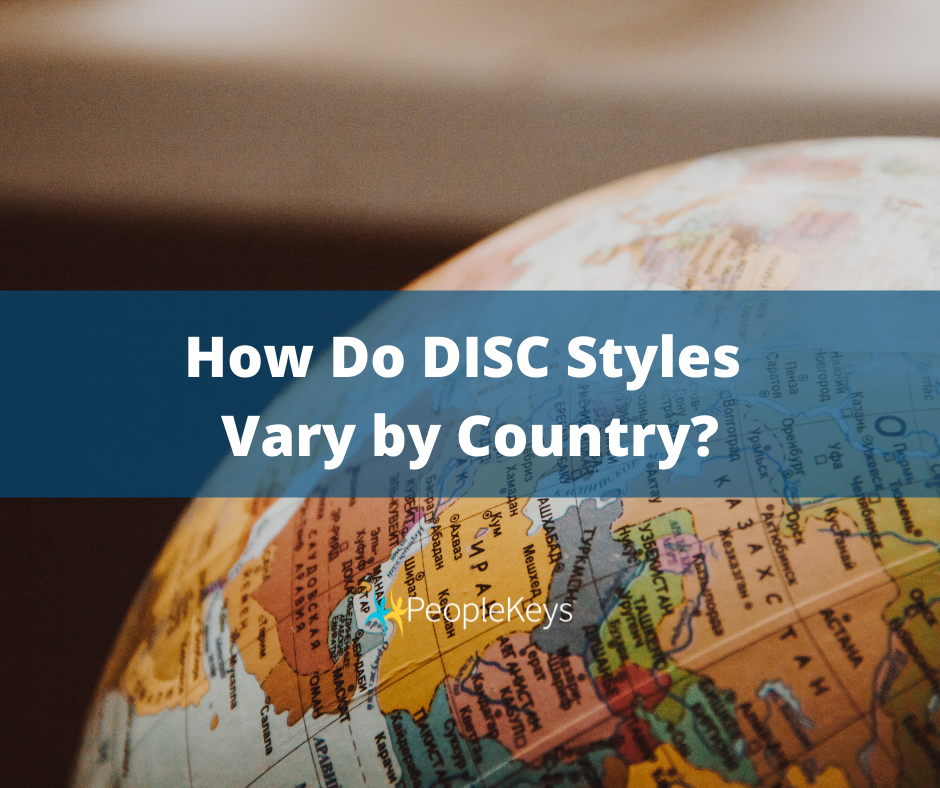
What I learned by Running a DISC Analysis of Our Entire Department
As I read through my DISC profile for the first time, I found myself nodding a lot, and smiling to myself. “Yep, that sounds like me,” was the thought that rang through my head.
This was probably similar to how you felt when you read your personal DISC profile. By using a highly validated ipsative assessment method, PeopleKeys’ DISC profile is able to accurately assess personality and predictable behavior. This is why the description of your personality feels like it is specific to you.
I discovered that, in essence, within a group, I am an I. Alone, an SC. It all made sense. I am what is known as an “Advisor Style”.
But after I discovered all of this about myself, I began to wonder...
PeopleKeys has received this question in many forms over their 35 years in the DISC business. They created a DISC business solution- The Group Dynamics Report. It combines all of the DISC profiles of members of small groups into one giant comprehensive document.
It shows you the styles of all of the members of your team in one profile, and it analyzes this team as a cohesive unit. How do your personalities intersect? What strengths do you have as a group? What can you do to ameliorate your team’s weaknesses?
I couldn’t wait to run it on our Marketing Team!
Here is what I found out:
From a small portion of The Group Dynamics Report:
“This Team’s combined style is ISD.
This group has some active, fast paced team members (I & D) and some passive, slower paced team members. It also has both task and people oriented team members. With I being the most represented style on your team, there’s a focus primarily on focusing on a fast pace, a fun environment, and people. The I team loves to work together, to process ideas out loud and brainstorm solutions to problems. The D styles on this team are more task oriented. They seek to obtain quick results and are less interested in the social aspects of their job. Due to the fact that both I and D styles are not detail oriented, this team may struggle with accuracy and organization, however. The S styles on this team may struggle with the fast paced momentum of this group, and may yearn for more consistency.
This group is usually friendly, compassionate, with members who are capable of leading or taking charge when necessary. The S styles in this group excel in supportive roles because they are so highly responsible, dependable, practical, and patient. However, this group’s D styles have the ability to step into more authoritative roles and can get results and be firm.
The majority of this group’s members genuinely care about others and listen carefully and sincerely to their issues and circumstances. Being the outstanding listeners that they are, they have the ability to judge clearly with the right amount of objectivity and human sensitivity. Most people regard the members of this group as loyal, trustworthy and dependable. This group assumes accountability for their actions and work and will follow through on their endeavors. The members of this group are diligent and productive workers who achieve their goals through perseverance and commitment. The majority of the members of this team have the ability to communicate clearly and concisely regarding their plans and goals. They hold firm convictions and will use their excellent people skills to convince others of their case. They may need to incorporate the skills of C style team member to help them to attend to the details they may otherwise have overlooked.”
What I learned:
As with my personal DISC profile, I had a lot of “aha!” moments when I first read our Group Dynamics Report.
The Group Dynamics Report didn’t just hit the nail on the head by accurately describing my team members, it offered some suggestions as to how we could improve.
Our team excels at communication. As a trio, we are great at listening to one another’s opinions and we always make any reasonable attempt to incorporate everyone’s input. This is part of what makes us work so well together as a team. But, as a group that is so highly focused on one another’s input, we occasionally need our D style team members to reign us in, and give us the autonomy to make decisions without group consensus.
I was surprised to see that our top two styles were I and S, as I usually see this group as being good at accomplishing the tasks we set out to achieve. I thought we would have our D style as secondary, rather than tertiary. But, much like with my personal profile, I noticed that the Group Dynamics Report addresses this misnomer as well!
As an ISC, I am capable of what is known as a “false D” meaning that under stress, I may be decisive and direct (if I am given sufficient autonomy and authority.) Initially, this appears to be a strict contradiction to my usual tendencies. But it does explain my leadership style, especially as an instructor. One of our team members has D as their second style, and the third member has D as their second style. So we all have D tendencies, even though they are not primary. And the profile addressed that.
It was especially interesting to note that even though I had been working with this team for quite some time, I didn’t really understand how their styles influenced our group. I knew that I was an ISC, and they were IDS and CD respectively. But I didn’t know what this meant for us together. I could assess each person as an individual, but we didn’t have a resource for enhancing our productivity and teamwork as a group.
The Group Dynamics Report described us to a T.
It reminded us that attention to details (the C style’s superpower) is not our strong suite as a group. It suggested that we rely on our CD style team member to keep us accurate and organized (very necessary, and very true.) It helped us remember to acknowledge one another’s accomplishments, because while we may excel at accomplishing our tasks, we are all also people oriented and sensitive to a lack of positive reinforcement. It encouraged us to allocate tasks according to our respective strengths, with the I styles having variety and flexibility, the CD attending to the details and processes, and the S styles collaborating. All of this is very necessary for us to incorporate into our team.
The Group Dynamics Report was able to find the language to describe that piece of our team we didn’t know was missing, but had felt its absence. And our team is so much stronger for having it.
Group Dynamics Report Components:
- Description of Team Culture
- Each team member’s DISC styles and graphs
- General characteristics of each style
- Analysis of team’s combined Style
- Description of your team under stress, and how your group responds to stress and what you can do about it
- Suggestions and advice for improving team relationships, communication, and productivity
- An analysis of your team’s ability to persist, direct, create, collaborate, attend to details, process, and influence
- A worksheet to assist your team in integrating this information into your team culture






